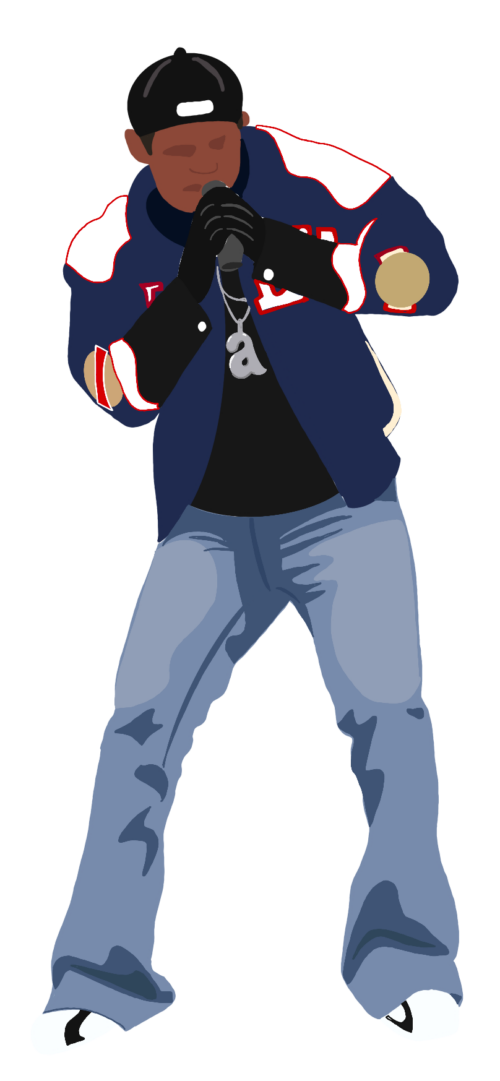This year, for the first time in my life, I voluntarily tuned into the Super Bowl. I am probably the furthest one can get from a football fan, but after days of listening to the frequent murmurs of excitement that Kendrick Lamar would be taking the stage during halftime, I decided it would be worthwhile to watch just his performance. However, after viewing a lively and engaging production, to hear it had been receiving extreme criticism was honestly surprising to me—especially as an African-American. Lamar not only delivered an entertaining set, but also paid homage to African-American culture while addressing timely societal dilemmas. So, if you happen to be one of the halftime haters, perhaps this article will change your perspective.
The choreography, lights, and cinematography, coupled with Lamar’s stage presence, came together over 13 minutes to create a captivating scene. From the opening note and introductory sequence, my attention was caught by the stage arrangement, which resembled a game controller: at each of the four corners lay shapes resembling joysticks and buttons. The camera zoomed in to reveal Lamar’s backup performers, donning America’s red-white-and-blue and acting as the working and supporting components of the controller. This, alongside the opening declaration of actor Samuel L. Jackson as Uncle Sam that “this is the great American game,” immediately illuminated a parallelism: the game is a metaphor for the functioning of modern America, with some being controlled and others doing the controlling.
At its premise, the show was a testament to combating assimilation, one of the many societal pressures that we, Black Americans, face as a group. We are constantly being controlled by American society—expected to conform to societal standards rather than our culture. Uncle Sam thus represented various subsets of American individuals, specifically those with more traditional views on the American persona. In contrast, the all-African-American backup performers were a representation of Black America. Uncle Sam pressured the performers into conformity, calling them “too ghetto” following more intense performances and imploring them to not “mess this up” following simpler ones.
Meanwhile, Lamar performed hits including “DNA” and “HUMBLE.” These two songs in particular are from his hip-hop/rap album DAMN, which highlight the experiences of Black Americans. Ironically, despite being so significant to Black culture, this album was extremely commercialized and appropriated without regard to its underlying substance—a phenomenon which often extends past music to fashion, hair, and language. Above all, based on the prevalence of messages of self-expression and self-acceptance contained in the setlist, this was his way of encouraging minorities to stay true to themselves and their cultures in a time when cultural clashes are only intensifying. By closing with a culminating performance of “tv off” in response to Uncle Sam’s pushes for conformity, Lamar only further emphasized this theme by implementing it as a blunt rejection of Uncle Sam’s attempts.
The show also referred to rising socio-political instability in the United States, with Lamar stating, “The revolution ‘bout to be televised. You picked the right time, but the wrong guy,” accentuating the resistance and activism currently rampant in our country. Lights in the bleachers were also coordinated to exemplify his messages. For instance, near the middle of the show, the lights read, “WARNING: WRONG WAY,”—my favorite occurrence of this. This artfully called to attention the negative trajectory along which our country is headed, with gaps of division widening and tension increasing. With the current state of our society due to the various actions of our administration, a major performance including such significant messages is substantial.
Alongside this, the show contained a highly anticipated feature. “Not Like Us” is the most popular of several diss tracks by Lamar against rival artist Drake. After back-to-back repeats of the song’s trademark melody, Lamar appeased his viewers’ appetites at last—and the performance did not disappoint. At one point, Serena Williams, Drake’s former girlfriend, was shown crip-walking to the track, both a jab at Drake and a nod to her hometown of Compton, CA. Outside of being a testament to his banter with Drake, the song challenges Drake’s devotion to Black culture in an artistic sense, emphasizing the embrace of cultural uniqueness even further amidst the excitement.
Also on the stage with Lamar, albeit briefly, were special appearances by Mustard and SZA. SZA performed two of her features with Lamar: “luther” and “All the Stars.” Her mellow voice was a beautiful touch to the upbeat energy the show boasted throughout, and it was the only instance Uncle Sam reacted positively. SZA, whose popularity has grown exponentially in the past few years, thereby embodied the calm-and-compliant character Black Americans are pressured to be. Alongside this, DJ Mustard, Lamar’s grammy-winning producer, appeared briefly on stage during “tv off.” Together, they had the effect of highlighting Black icons and Black excellence in America.
Ultimately, regardless of what you may think of his performance, Lamar’s controversial halftime performance is officially the most watched show in history (live and streaming). Whether this is deserved or not is widely debated, but I can confidently say I believe it was one of the most impactful halftime performances in Super Bowl history.
Britney Ampadu ’28 (britneyampadu@college.harvard.edu) is an (evident) Kendrick Lamar fan.

